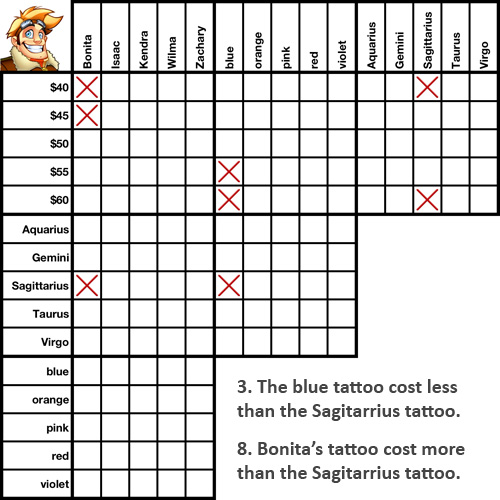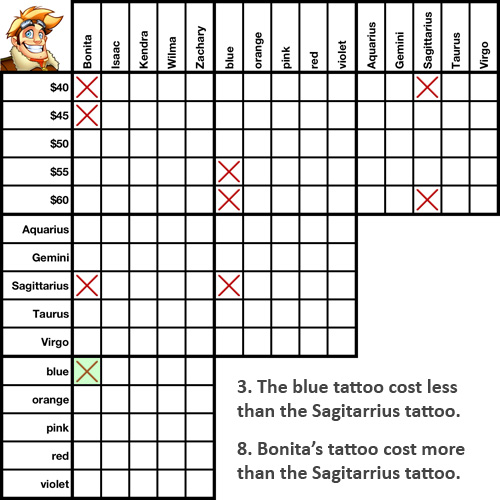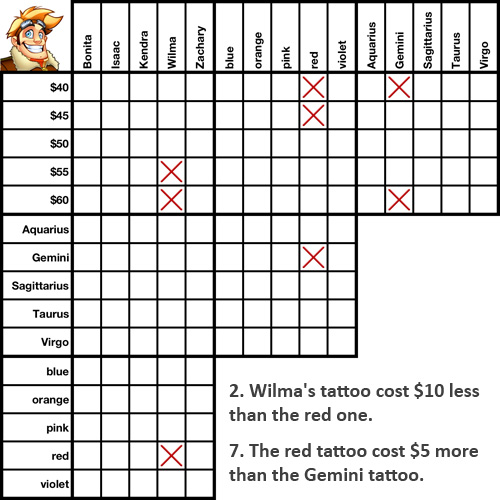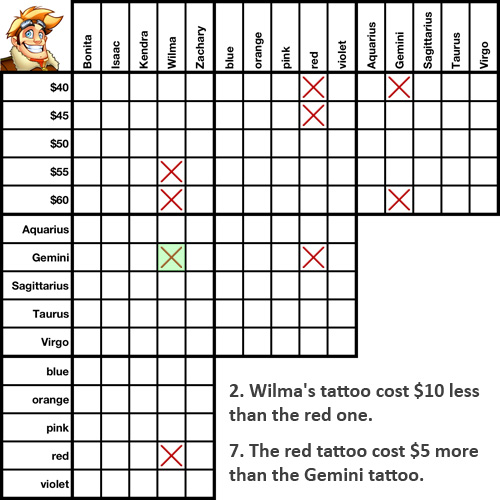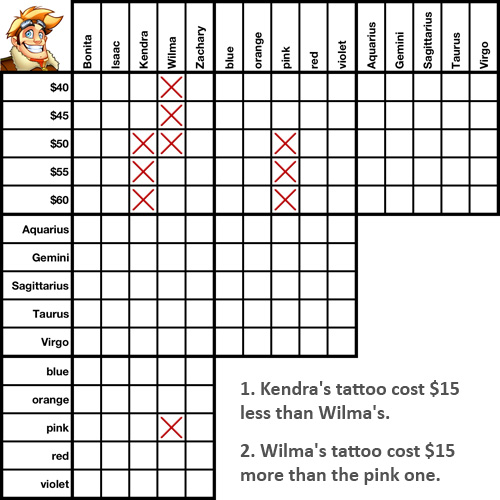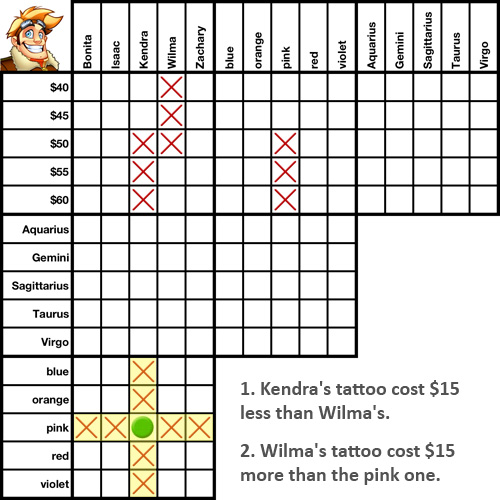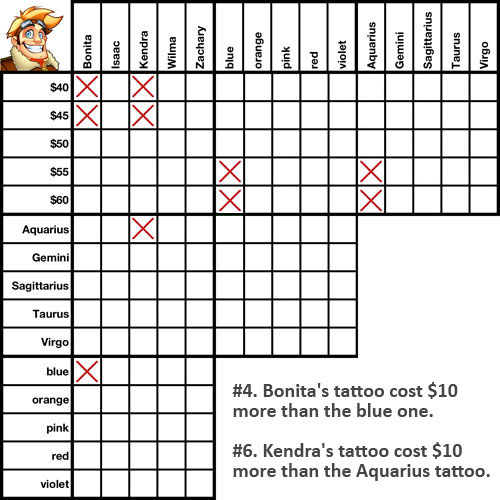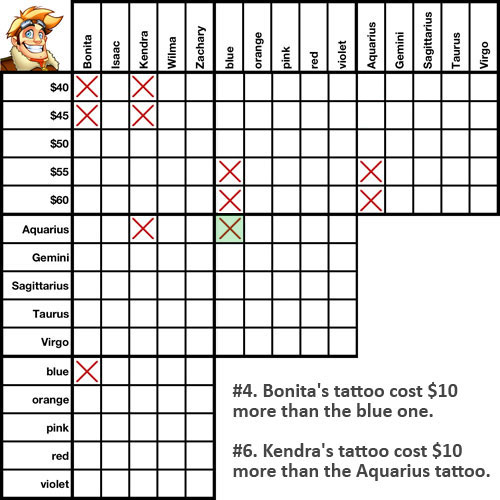When you have multiple greater/lesser than clues in the same puzzle, you can sometimes find "comparative relationships" between two or more clues that can reveal new true or false squares.
In this example, compare clues #3 and #8. A new false relationship, not yet shown on the grid, can be uncovered by comparing these two clues. Can you find it?

